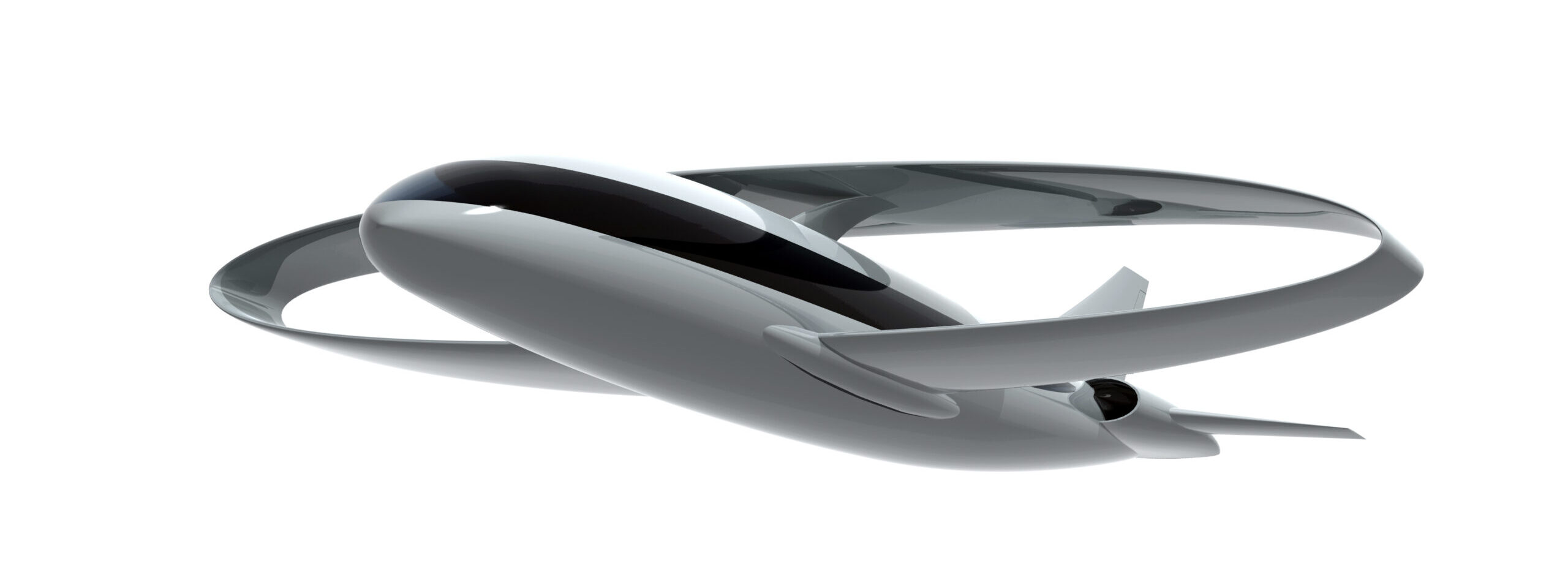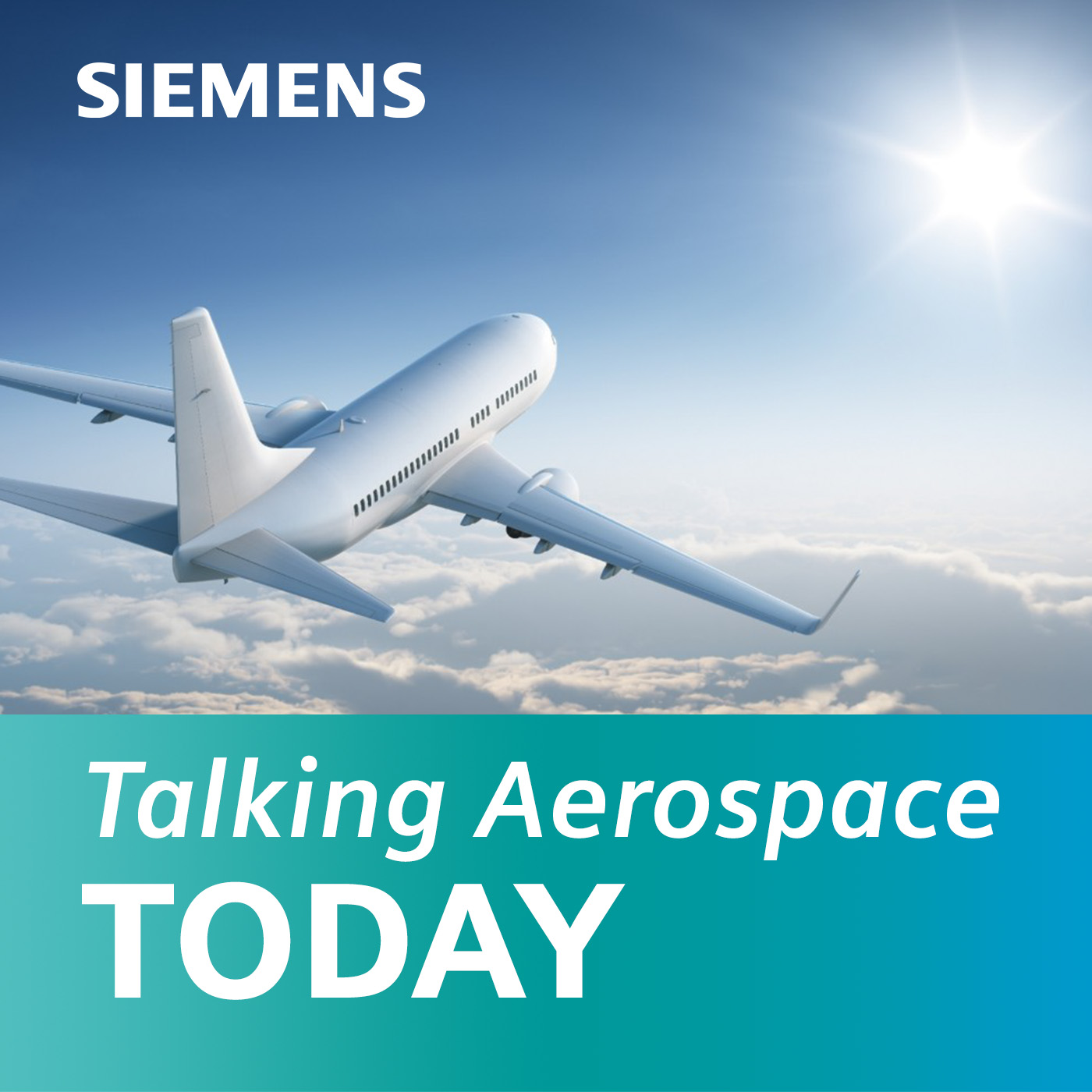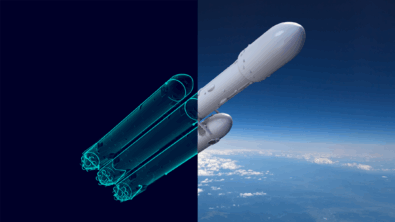“Productivity” podcast series (Ep. #3): How to accelerate product design through agile product development

With innovation and complexity on the rise, it’s no surprise companies are trying to develop their products faster to meet customer needs. Not only is there more innovation, but the competition is more intense.
One way OEMs and companies are surviving is to introduce agile product develpment into the mix.
What is agile product development? You’re invited to listen to this week’s podcast. We cover a lot of ground.
This is episode #3 in a five-part series.
…What if you could build and test your product before the full design is complete, and actually learn key insights before you fly?
…What if integration was not just about managing a bunch of interfaces around suppliers, but managing your technical risks so that you could manage your schedule in the best way possible?
…What if you could dissolve all these silos that exist among teams and between partners so you could truly accelerate your innovation?
You can by rethinking your product development approach.
Today in our third podcast of the “Accelerating Productivity Through Digital Transformation” series we’ll be discussing how to accelerate product design by introducing agile product development. What is agile product development? Why should you care? And how exactly does Siemens help customers in this area? These are questions that Dale, our “go-to guy” for all things aerospace and defense will answer.
Dale Tutt is the Vice President of Aerospace and Defense at Siemens Digital Industries Software. He’s been involved in product development for 30 years and prior to joining Siemens, he was the Vice President of Engineering at The Spaceship Company. Before that he spent 18 years at Cessna Aircraft Company. He’s also worked at General Dynamics Space Systems Division and Bombardier Learjet.
So much to discuss!
In this episode, you will learn:
- The drivers behind the need for agile product development. (04:15)
- What is agile product development? (07:53)
- The steps that agile product development entails. (09:19)
- A real-world example of agile product development. (12:29)
- How Siemens helps customers when it comes to agile product development. (13:48)
- The advantages of agile product development. (16:13)
For more information, please visit the Siemens Aerospace & Defense website.
Podcast transcript:
Scott Salzwedel: Hello! This is Talking Aerospace Today – a podcast for the Aerospace and Defense industry, a place that brings the promise of tomorrow’s technology to the ears of our listeners today. I’m your host, Scott Salzwedel. Welcome to our five-part series “Accelerating Productivity through Digital Transformation.” As you might imagine, maximizing productivity throughout the A&D product lifecycle is key to success and significant profits. Today, in our third podcast, we’ll be discussing how to accelerate product design.
Before we get started, to recap our last episode, we talked about model-based systems engineering – or MBSE – and how the systems engineering approach streamlines the entire product lifecycle process, bringing innovation and new levels of productivity to the aerospace industry. No question, MBSE is the future of aerospace. If you missed it, I urge you to take a listen!
So in this podcast, we’ll be discussing how to accelerate product design by introducing agile product development. So, what is agile product development? Why should you care? Let’s get started on this very important topic. I’m pleased to introduce my special guest, Dale Tutt, who is Vice President of Aerospace and Defense at Siemens Digital Industries Software. Welcome, Dale! Thanks for stopping by to talk about productivity and the digital transformation in aerospace and defense. Before we dive in, could you please share with our listeners, your background, and your role at Siemens?
Dale Tutt: Thank you, Scott. I’m very happy to be here today! So, before I joined Siemens, I worked in the aerospace and defense industry for about 30 years in various engineering and program leadership roles. In my most recent position, I was the Vice President of Engineering at The Spaceship Company. We were working with Virgin Galactic in developing spaceships for commercial space tourism. Before that, I was at Textron Aviation or Cessna Aircraft Company for about 18 years, and a number of engineering and program management roles there, as well. In my last real big program, before I left there, I was the Chief Engineering Program Director for the Textron AirLand Scorpion Jet. We went from a concept sketch to first flight of an all-new tactical aircraft in about 23 months, which was pretty fast for the industry. And, before that, I had some time as well at Bombardier Learjet and General Dynamics Space Systems Division, so a mix of space and aircraft in my career. But now, at Siemens, I’m the Vice President of the Aerospace and Defense Industry. And we do a lot of the industry strategy development and work on developing product solutions for the aerospace and defense industry and for our customers in the industry, so that we can provide solutions that meet our customer’s needs. So, I get to work with all of our product lines and our global sales teams and it’s a lot of fun in this role!
Scott: Wow Dale, impressive background. Since this podcast series is on productivity, why don’t we first take a minute and discuss the many ways in which an OEM or a supplier can increase productivity?
Dale: As we talked about last time, we talked about model-based systems engineering and really orchestrating your technical program and really bringing everything together from engineering to manufacturing and into your supply chain and into your product support. But today, we’re going to talk about accelerating your product design – it’s a fun topic, I really enjoy talking about it – and agile product development and how you can really accelerate using agile product development processes or methods. And then, the third thing is really improving your program management, being more effective in how you manage your programs, and we have our Integrated Program Planning and Execution solution we’ll talk about. And then, finally, moving into the manufacturing process around accelerating your production ramp-ups. That’s so important when you want to start delivering the customer and meeting your customer demand and being able to ramp-up faster and doing this through intelligent and/or flexible manufacturing methods so that you can be more agile, even in your manufacturing processes.
Scott: Okay, great! So when we talk about accelerating product design, we’re really talking about agile product development. What’s driving the need behind agile product development?
Dale: Well, companies are really trying to develop their products faster and meet their customer needs. And part of this is driven by the fact that you have all this innovation going on the industry, and you have a lot of companies competing in this space. We’ve talked about the eVTOL or the air taxi aircraft, where there’s literally hundreds of companies in that space working – and so, everyone wants to be first. But even in some of our defense agencies, they’re also looking to go faster. So, for example, the US Air Force is looking to change its acquisition process. They can’t afford these big programs that take 20 to 30 years to develop, anymore. In the ’60s and ’70s, it took five to six years from the time an airplane was started until it went into service. And they were able to really crank out a lot of different kinds of airplanes quickly.
And the Air Force is saying, “Well, okay, why is it taken us two, three decades now? How do we get back to that?” So, they’re willing to look at these agile development processes where you get a base capability, you know, say you have an airplane flying, and it’s got a couple of basic – it’s got your sensors, and it’s got some weapons on it, or it’s got some capability – and then you add more. And so, over time, you keep adding and extending the capability of that current product. And so, they’re using more rapid prototyping and rapid fielding; it’s very important to be able to move fast, they want to take this very agile mindset. And so, they’re recognizing that smaller and faster programs are better than these big, long programs because they can get the capability out to the warfighter faster.
In the same way – and I talked a little bit about the eVTOLs already, but the commercial companies are also needing to adapt to these evolving market needs. And so, the market’s moving faster than their product development. And I think if you think about what’s going on in automotive with Tesla, I was reading an article about this a couple of weeks ago that they’ve gone to this agile approach where they’re using more software, and kind of like your iPhone, they’re pushing software to your car, and they’re adding capability to the car continuously. So, the customers get a product that they can use, but then they can keep adding to it and making it better. And so, it’s kind of the same thing with the aerospace market – they’re looking for how can they go faster and get products to customers faster?
Scott: What you’re saying then is companies must now rethink their product development approaches, correct?
Dale: When you think about the traditional aerospace programs that take 10 years to develop, I mean, they use a waterfall approach, and they want to get everything done the first time out, so they have all these requirements they have to satisfy. But these 10-year, 15-year life cycles don’t meet their needs anymore. So, they’re looking at agile product development, where really, it takes the concept that’s used for software, but extends into products. So, think about it: what if you could build and test your product before the full design is complete, and actually start to learn something about it? What if your integration was not just about managing a bunch of interfaces around suppliers, but also about managing your technical risks so that you could manage your schedule better? What if you could dissolve all these silos that exist between teams and between partners and really, truly accelerate your innovation? And then, finally, your program management becomes more focused on maturing and delivering content, not just on meeting a bunch of costs and schedule milestones. So, it really can transform how your culture thinks about designing and developing new products.
Scott: Lots of great questions. So, make a pretty convincing case that we do need something like agile product development. Maybe we should explore exactly what is agile product development.
Dale: Much like software, you can start thinking about incorporating sprints into your program planning. And people may not call it a sprint necessarily, but it’s about breaking your program down into more manageable chunks so that you can really focus on completing an aspect of your program and then moving on to the next program. There’s this myth out there that agile is chaos. I mean, I think some people, when they hear agile, they’re like, “Okay, that’s something for software and we need to control it better than that.” But you know what? It’s not. It’s not chaos. It’s actually graduate-level program management. You have to have a very well-planned and executed process and program plan that really provides flexibility. But if you don’t do good planning up front, then you don’t really do very good agile. And so, it does take a fair amount of planning.
So, in this first sprint, you build the foundation, so you get some basic capability going and you might virtually test it, or you might do some rig testing, or some bench testing. And then, you go to the next sprint and it adds more functionality or capability and maybe you go into a different level or a different type of testing. So, with some of the attributes of this, you can work with smaller teams, you can focus on short-term goals that meet the long-term goals of the program, and you’re really just breaking that program down into manageable, much shorter time chunks and keep the team focused on a series of goals.
Scott: I really like the idea of sprints. I think we should dive down a little bit deeper into what’s included in each sprint?
Dale: Yeah, so in each sprint, you start with a plan. And so, maybe you have the context of your bigger program plan, and then you know for sprint number two, these are the requirements that we’re going to work to, and these are the schedule and the plan, and this is how we’re going to execute this sprint. And then, as you move through and you start doing your design, you’re doing more simulation-driven design. So, the last time we talked about using MBSE, to use the requirements to drive your design. But then, the next phase that is really using good simulation – your product digital twin. Whether it’s electrical, mechanical, or software, you’re using your simulation with that twin to drive your design. And then, using that twin, you then are able to do virtual verification. And so, you’re able to minimize your risk. So, you’re testing your performance out of your product, you’re minimizing your risk, you’re verifying that it’s performing as you expected. You then take a look at your virtual and real manufacturing – and this is part of the concurrency that needs to happen, that you’re able to take a look at your manufacturability of your product and through simulation, be able to verify that, yes, you can go ahead and build that. And so, now you start taking risk even out of your manufacturing process. And then, at the end, you just start to verify everything, you close out your sprint. This really results in actual output that rolls into the baseline and establishes the readiness for your next sprint. So, it’s very flexible to change. As new requirements emerge, you’re able to absorb them into an upcoming sprint, so it becomes part of your planning process. So, really, it is a complete process of individual set of activities that you close the loop on each sprint, before you move on to the next sprint.
Scott: Well, that’s all well and good, but, how do you manage something like this?
Dale: Part of this is you need to be doing continuous integration and you’re working, really, within the digital environment that’s provided by the accelerator portfolio that we offer here, at Siemens. And so, with having this good, strong digital thread throughout your process – and that provides that connectivity from the early design phases through to when you have completed your certification, say, of your new aircraft, your new program – you’re doing this continuous verification and you’re working, you’re managing, maintaining this configuration control of all the artifacts throughout; you have this traceability through your digital threads that you’re being able to work the right thing all the time; you have a very robust program management system, as I mentioned earlier – and it’s got to be integrated into all your processes. And so, everything is synced together. So, you have your MBSE programs, your digital threads that are synced up with your design digital threads, and with your program management digital threads. And then, finally, you’re doing this continuous verification I mentioned earlier. Whether it’s virtual or physical, you’re verifying at each sprint that you are satisfying the requirements, which then minimizes the risk as you go forward by using this digital thread.
Scott: I’m curious, could you give our listeners a real-world example of agile product development? I mean, what has been your experience out in the field?
Dale: I’ve been kind of lucky. A lot of the programs that I’ve worked on have kind of fallen into this category of what I would call agile product development. Probably the one that’s most near and dear to my heart was when I was leading the Textron AirLand Scorpion program, while at Textron Aviation. We’ve developed the plan, we moved very quickly, we went from a concept sketch to first flight in two years. But we weren’t done at two years, necessarily; the first plan was to get the basic airplane flying. And then, we knew that six months later, we’d want to be going to Farnborough. So, we had already planned for a series of modifications that we would do. So, we did some basic flight testing, validated that all of our assumptions were correct, and that the basic airplane was flying very well. Then, we added some capability to the airplane, like some additional ice protection capability that we were able to design in and the team was able to focus on adding that, and then we added it in and then we did our test flights – so we took the airplane to Farnborough, and then, every six months we had a sprint like that. And so, it was a very well-thought-out process, adding capability each time but doing it in a very manageable way and building on a foundation of success from the previous sprint.
Scott: Let’s talk a little bit about the role Siemens plays in all this. How does Siemens help customers when it comes to this agile product development?
Dale: Yeah, absolutely. I touched on some of this a little bit earlier. But, really, with the accelerator portfolio – which brings all of those solutions together, the different solutions in the Cloud, and our rapid application development platforms together – It brings this comprehensive digital twin of your product and your production processes together. So, you have this really rich, robust understanding of what you’re building of your product and how you’re going to build it. And then, we bring in elements of generative design, which really brings you this multi-domain optimization. So, you’re able to start to automate some of these design cycles. We, then, bring in this integrated and electrical and mechanical system design. So, electrical systems are very key to a lot of programs. You have wires running throughout the whole airplane and really bringing this integrated electrical and mechanical system together, the system design together, really helps accelerate that design. But, more importantly, the fact that we really have strong electrical design tools in the first place that enable you to take those system models that you started with from your MBSE process and really generate your electrical system design quickly, and then hand it off into your electronic system and your wire harness and your software designs.
Dale: So then we bring this complete digital thread, so we tie all of these things together – the generative design, the electrical design, and the mechanical design – tied together with this complete digital thread, from engineering all the way into production. And we include composites and additive, all these other technologies that help you go fast. We’re also bringing in advanced visualization with augmented reality and virtual reality. So, now you can start to design in context. When you think about virtual reality, you’re looking at the airplane maybe the same way that the mechanic or the technician would look at it. And so, it’s a completely different design experience and design environment. Then, we pull it all together again, with this flexible and open ecosystem. So, you can bring any tools in for both design, engineering, and manufacturing, and tying these together now, with this comprehensive digital twin and the comprehensive digital thread, we’re really able to help accelerate the overall design process.
Scott: Oh, Dale… You just covered a lot of ground there. I think we need to back up a bit and talk about the benefits or actually, the advantages all of this brings.
Dale: I think the simplest thing is you’re going to mature your product faster, you’re going to get this increased product maturity, and you’re going to get more capabilities out of it. We’ve had customers that are doing this, they’re using these design tools, they’re using the virtual verification – we sometimes call it the virtual integrated aircraft – but they’re using these simulations and they’re taking time out of their schedule. They’re reducing their development schedule, and their cost more than 25%. And they’re reducing the amount of testing, the physical testing that they have to do, by 25 to 30%.
So, they’re seeing significant and relevant cost savings. And then, they’re becoming much more agile in the execution and their decision-making. They’re able to make better decisions, they have better information because they have the digital thread and all this traceability and that connectivity. And then, finally, I think, at the end of the day, they’re reducing their development time, but probably, most importantly, is they’re getting like 90% first-pass yield on their design and their manufacturing process. So, they have less rework when they get out of their manufacturing line. And so, you’re seeing the benefits in the design world, but you’re also, more importantly, maybe you’re seeing it in the manufacturing world, when you really need to start producing parts and delivering products to your customers.
Scott: We’re just getting into it! And I’m afraid we’ve run out of time.
Dale: Wow.
Scott: Yeah, I know. We’re just getting warmed up! But, listeners, don’t worry! There are more episodes to come. So, Dale, what can our listeners expect in our next episode?
Dale: So next time we’re going to talk about, how you truly achieve your program execution excellence with our Integrated Program Planning and Execution solution set.
Scott: Okay, thank you Dale for this great discussion on agile product development and the role it plays in aerospace productivity.
Dale: Hey, no problem, Scott! And again, thank you for having me! It’s always fun to be here!
Scott: Thanks, yes. And we will be talking again soon. And, of course, I’d like to extend my many thanks to our listeners. I’m glad you tuned in to this podcast – thank you, listeners! Now, remember, at the top of the show, I mentioned Dale and I will be doing a five-part series on A&D productivity. So, check back here for more information on our next podcast. Also, in the meantime, you can visit us online at siemens.com/PLM/AerospaceDefense.
This is Talking Aerospace Today, and I hope you’ll join us again, for our next podcast. Until then, bye for now…

Dale Tutt – Vice President of Industry Strategy at Siemens Digital Industries Software
Dale Tutt is Vice President of Industry Strategy at Siemens Digital Industries Software. Dale leads a team of experts to develop and execute industry-specific product and marketing strategies in collaboration with the global product, sales, and business development teams. With over 5 years of experience in this role combined with extensive experience in the aerospace and defense industry, Dale has a deep understanding of the challenges and opportunities facing companies as they embark on their digital transformation journeys.

Scott Salzwedel – Host
Scott Salzwedel is senior technical writer and corporate communications writer involved in the Siemens Aerospace & Defense Industry and Siemens Capital. In addition to writer/host of Talking Aerospace Today, Scott is the writer of white papers, articles, blogs, videos and websites at Siemens.

Talking Aerospace Today Podcast
The A&D Industry is at a serious inflection point. Transformation to the digital enterprise has opened up a new era in innovation and technological breakthroughs. However, complexity and compliance continue to hamper the best of efforts.
Join us as we explore how Siemens is turning complexity into a competitive advantage for many of our customers – today and well into tomorrow.


